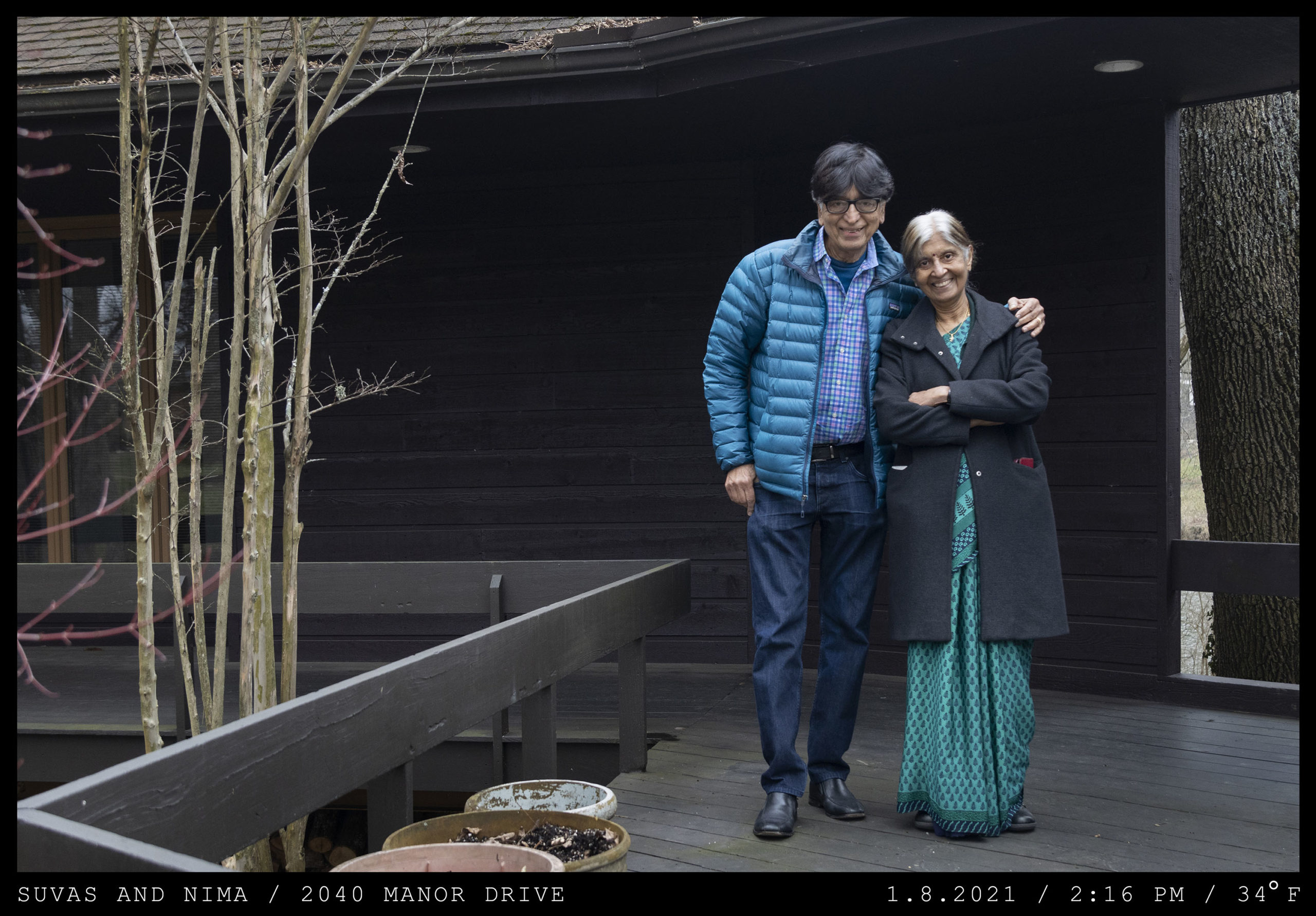Nirmala S. Desai, MD
Nima: “I went to medical school in Baroda, which is in the Western part of India, about 250 miles North of Mumbai. It was in the early 60s and women in general were not going to professional schools. I came from a conservative Southern family—girls were educated, but then they got married, stayed home, and raised family. That was the way of doing things.
Somehow, from early childhood, I always wanted to be a physician, even though there were no physicians in my family. Against the rest of my family, my father encouraged me to pursue my dream. My mother was completely opposed to it. She felt like it would interfere with my getting married and all that.
Thanks to my father, I went to Baroda medical school. That’s where I met my future husband. He was my classmate. My maiden last name was Bangalore, which is the name of a city. His last name is Desai, so we were alphabetically close. We were dissection partners and when we worked in small groups, we were in the same group. We got to know each other over the many years. That’s how we met and decided to get married.
During my second year of medical school, the World Health Organization (WHO) had an exchange program involving Indian medical schools. Our medical school was selected, as was the medical school of Edinburgh. Under the exchange program, the Edinburgh professors would come to Baroda medical school and the Baroda professors would go to Edinburgh and spend a year. Neonatology had not yet emerged as a sub-specialty of pediatrics. However, in 1962 Dr. Furquhar came as a visiting professor. He was a pediatrician with a special interest in neonatal medicine. He gave several lectures to the students. He was inspiring to me and that was the beginning of my neonatal journey.
My husband and I came to the US in 1967, initially to Philadelphia. Subsequently, I did my pediatric training at Boston’s Children’s Hospital. Normally, for international medical graduates to get a place at Boston’s Children’s Hospital was difficult. Perhaps, I was in the right place at the right time.
At that time, neonatology was an emerging specialty and there were very few training places. I did my training at Boston Lying In Hospital. Now it is part of the Brigham and Women’s Hospital. At the time, my husband did his urology training at Lahey Clinic Medical Center in Boston.
In 1972 I joined the faculty of the University of Kentucky Medical Center and established the neonatal intensive care unit in 1974. I was the first trained neonatologist to come to Kentucky. Initially the Neonatal Intensive Care Unit had 17 beds and has currently grown to a 95 bed NICU.
Neonatology has now evolved as a pediatric subspecialty. When I started in the 70s, babies born at 36 weeks of gestation had high mortality. Now in 2021, we have babies weighing as little as 350 grams, less than a Coke can, with reasonable chances of survival. Twenty-four weeks used to be considered as the viability threshold. Now we resuscitate babies who are born at 22 weeks. Surgical advances, modern technologies, and newer medications have improved survival. The quality of the survivors also has improved over the years.
I have also had the pleasure of following these babies in our follow-up clinic. I have taken pride in the fact that in Kentucky, we take care of our infants as good as anywhere else in the United States. And it’s all because of team work. We have very well trained NICU nurses, nurse practitioners, dietitians, social workers, and pharmacists.
It was also a privilege to train other neonatologists over the years. We have had more than 100 fellows. Now they work all over the United States and outside the country as well.
The last forty-eight years have been a thrilling, fulfilling and gratifying journey. I am grateful to the divine powers that I have been placed in the right institution. Now, when we travel to India, we do volunteer medical work and share the things we have learned. At the University of Kentucky there is a program called the Global Health Program in which we have a sister relationship with Ecuador and we go there as a medical team to train medical personnel and do volunteer work there too.
I raised my two children here. My daughter was born in Lexington. My son was born in Boston. Both of them are physicians. It’s definitely an immigrant’s dream fulfilled.
On the whole, it has been an exciting journey in professional academic medicine and neonatology, especially with the evolution and advances in neonatal medicine and being part of this transition since its inception at the University of Kentucky Medical Center. It has also has been an exciting and gratifying journey being a first-generation immigration physician in a new country. Kentucky and the USA have given us a lot; hopefully we have been able to make a small contribution in return as first-generation immigrants.”

